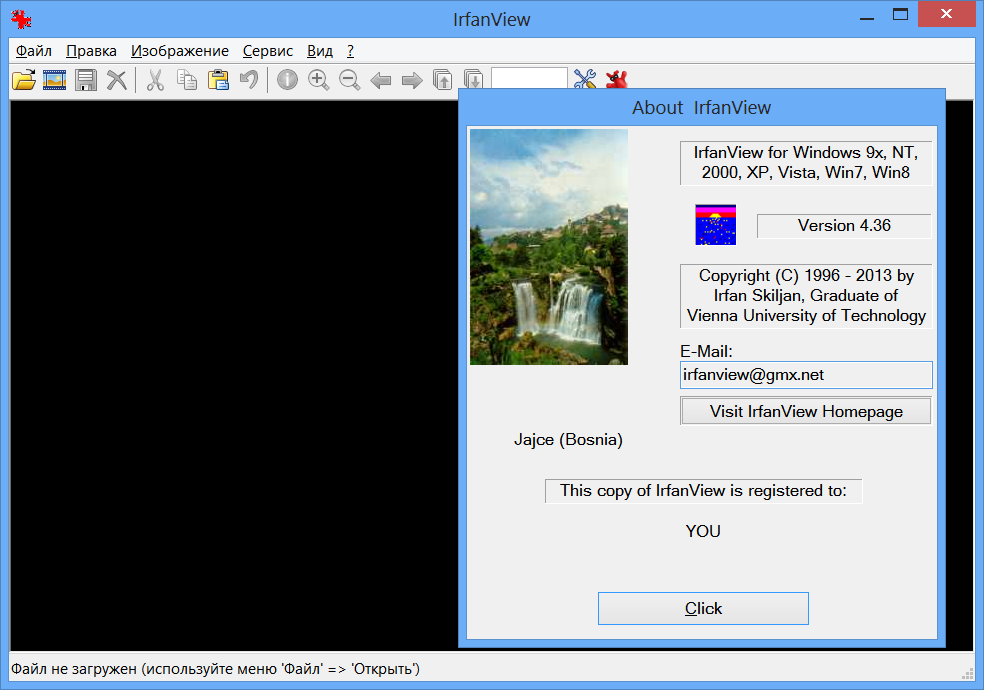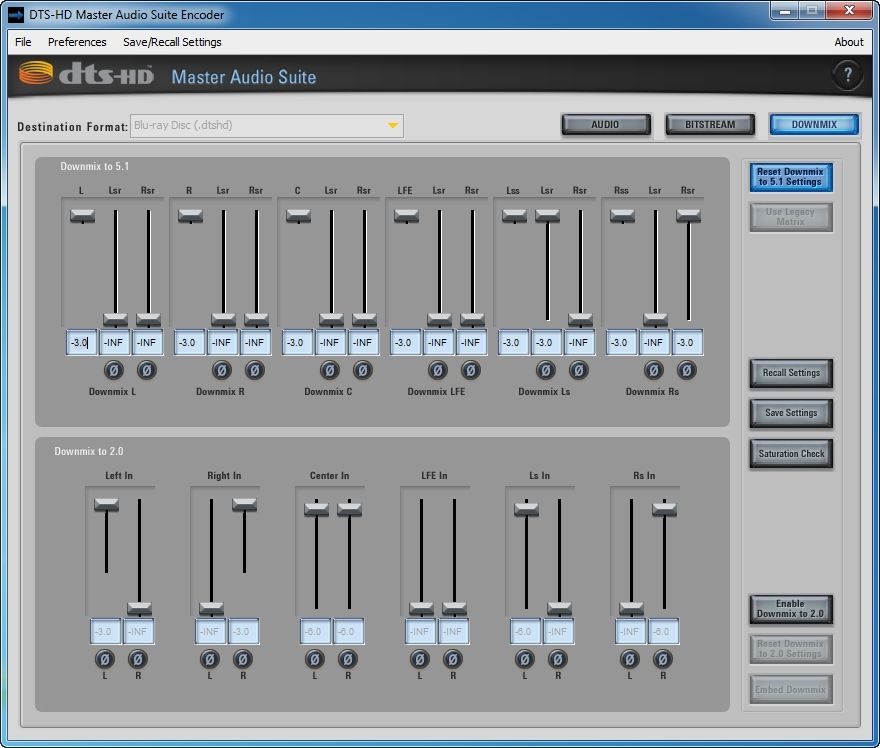[ITEM]

 [/ITEM]
[/ITEM]


Dts Hd Master Audio Suite 26022 Keys Thetazzzz Rating: 4,1/5 3344 reviews
DTS-HD Master Audio is an extension of DTS' previous DTS Coherent Acoustics codec. Prior to 2004, it had been known as DTS++. Though it is an optional audio format for Blu-ray Disc format, by 2010, it had become the dominant Blu-ray lossless audio format over its competitor Dolby TrueHD.
When Blu-ray hit the scene and snuffed out (outspent, really) HD-DVD in the mini format war, a new audio CODEC was needed to handle the many ways in which audio would need to be delivered in the high-definition era. DTS-HD Master Audio (formerly known as DTS++) became the new defacto-standard for the premium-level of on-disc HD audio. DTS-HD Master Audio is a “lossless” audio format—using a variable bit-rate technology to deliver high quality audio, while keeping file sizes small and conserving bandwidth. It turns out the format was an impressive jump over prior iterations of DTS and was light-years ahead in how it could communicate and transmit the required 7.1 sound for Blu-ray. DTS (the company) set out to make DTS-HD Master Audio the audible equivalent of listening to the master recordings. Technically-speaking, DTS-HD Master Audio carries within its file, two data streams: the original DTS “core” stream and another stream that contains the “residual” data that is made up of what’s left from the original signal and the lossy compressed stream. The decoder is then able to use both to recreate an audio stream that is bit-for-bit identical to the original (i.e.
The encoding process is also very quick, and can be done in a single pass—something that is very important in the area of content creation and mastering. Since DTS-HD Master Audio is essentially bit-for bit identical to the studio master, it can also be used as an archival format, but while taking up dramatically less storage volume when compared to uncompressed PCM audio tracks. [top-seller category_id=’21’ product_count=’4′ title=’Top Selling AV Receivers’] With respect to the Blu-ray format, DTS-HD Master Audio is becoming popular as it offers a significant space-savings, allowing for multiple languages to be stored on a single Blu-ray movie disc. This leaves more room for higher video quality, additional extras and special features. DTS is also completely backwards compatible, but in a way that allows legacy AV receivers and other products to play back DTS-HD Master Audio files at up to 1.5 Mbps with up to 7.1 discrete channels at 96 kHz or 5.1 channels at 192 kHz. Here’s what the various bit rates for DTS technologies look like.

The many different flavors of DTS and their corresponding bit rates Note that DTS-HD can output audio at up to 96 kHz sampling rates, but DTS-HD Master Audio can output 5.1 at up to 192 kHz. DTS-HD master Audio also has a dramatic range where it can be encoded at a variable rate below 1 Mbps all the way up to around 24.5 Mbps. Fihtengoljc matematicheskij analiz pdf converter. This is a flexible Mastering-level audio CODEC that has a lot of room for expansion and seems perfectly fit for all but the most aggressive surround formats of the future.
Do you notice the CODECs present on your Blu-ray discs? Ever purposefully select one over another when playing back a movie? Let us know if you have, and why on or leave a comment below. When he's not or playing with the latest AV receiver or loudspeaker, Clint enjoys life as a husband, father and avid reader. He has a degree in recording engineering, carries several THX certifications (Technician I and II, THX Video), and is ISF Level II Certified. He has been involved in multimedia and/or online publishing in one form or another for the past 18 years (including being the Editor-in-Chief of Audioholics.com from 2002-2013). In 2008, Clint was invited to be part owner in what was then The Audioholics Store (later to become Audiogurus).
Today, he hopes his efforts at Audiogurus will provide enthusiasts and DIYers with reliable and engaging home theater reviews to help them make better purchasing decisions. I have played a BD movie with 5.1 DTS-MA through both the optical output to a processor, a combined processor/amplifier. The processor automiatically decoded a dts stream. I played the same movie whose player’s hdmi output went to an LPCM 7.1 decoder, like the Cypress CLUX-11SA or A3830A sold by Altronics (Australia).
- Author: admin
- Category: Category
Search
Top Articles
- Download Dragon Ball Supersonic Warriors 3
- Sanminimum Dlya Prodavcov Voprosi I Otveti Onlajn
- Conexant Cx23881 Drivers
- Unki Nazron Ne Kuch Aisa Jadoo Kiya Mp3 Free Download
- Good Traffic Freeware For Fs2004 Project
- Silca Wintransfer Download
- Krossvord Po Menedzhmentu S Otvetami
- Yurij Ivanovich Rab Iz Nashego Vremeni Vse Knigi
- Ek Hazaron Mein Meri Behna Hai Serial
- Infosys Training Study Material
- Skachatj Igru Generali Vojna V Irake S Torrenta
- Airlink Awlh5025 Windows 7 Driver

Dts Hd Master Audio Suite 26022 Keys Thetazzzz Rating: 4,1/5 3344 reviews
DTS-HD Master Audio is an extension of DTS' previous DTS Coherent Acoustics codec. Prior to 2004, it had been known as DTS++. Though it is an optional audio format for Blu-ray Disc format, by 2010, it had become the dominant Blu-ray lossless audio format over its competitor Dolby TrueHD.
When Blu-ray hit the scene and snuffed out (outspent, really) HD-DVD in the mini format war, a new audio CODEC was needed to handle the many ways in which audio would need to be delivered in the high-definition era. DTS-HD Master Audio (formerly known as DTS++) became the new defacto-standard for the premium-level of on-disc HD audio. DTS-HD Master Audio is a “lossless” audio format—using a variable bit-rate technology to deliver high quality audio, while keeping file sizes small and conserving bandwidth. It turns out the format was an impressive jump over prior iterations of DTS and was light-years ahead in how it could communicate and transmit the required 7.1 sound for Blu-ray. DTS (the company) set out to make DTS-HD Master Audio the audible equivalent of listening to the master recordings. Technically-speaking, DTS-HD Master Audio carries within its file, two data streams: the original DTS “core” stream and another stream that contains the “residual” data that is made up of what’s left from the original signal and the lossy compressed stream. The decoder is then able to use both to recreate an audio stream that is bit-for-bit identical to the original (i.e.
The encoding process is also very quick, and can be done in a single pass—something that is very important in the area of content creation and mastering. Since DTS-HD Master Audio is essentially bit-for bit identical to the studio master, it can also be used as an archival format, but while taking up dramatically less storage volume when compared to uncompressed PCM audio tracks. [top-seller category_id=’21’ product_count=’4′ title=’Top Selling AV Receivers’] With respect to the Blu-ray format, DTS-HD Master Audio is becoming popular as it offers a significant space-savings, allowing for multiple languages to be stored on a single Blu-ray movie disc. This leaves more room for higher video quality, additional extras and special features. DTS is also completely backwards compatible, but in a way that allows legacy AV receivers and other products to play back DTS-HD Master Audio files at up to 1.5 Mbps with up to 7.1 discrete channels at 96 kHz or 5.1 channels at 192 kHz. Here’s what the various bit rates for DTS technologies look like.

The many different flavors of DTS and their corresponding bit rates Note that DTS-HD can output audio at up to 96 kHz sampling rates, but DTS-HD Master Audio can output 5.1 at up to 192 kHz. DTS-HD master Audio also has a dramatic range where it can be encoded at a variable rate below 1 Mbps all the way up to around 24.5 Mbps. Fihtengoljc matematicheskij analiz pdf converter. This is a flexible Mastering-level audio CODEC that has a lot of room for expansion and seems perfectly fit for all but the most aggressive surround formats of the future.
Do you notice the CODECs present on your Blu-ray discs? Ever purposefully select one over another when playing back a movie? Let us know if you have, and why on or leave a comment below. When he's not or playing with the latest AV receiver or loudspeaker, Clint enjoys life as a husband, father and avid reader. He has a degree in recording engineering, carries several THX certifications (Technician I and II, THX Video), and is ISF Level II Certified. He has been involved in multimedia and/or online publishing in one form or another for the past 18 years (including being the Editor-in-Chief of Audioholics.com from 2002-2013). In 2008, Clint was invited to be part owner in what was then The Audioholics Store (later to become Audiogurus).
Today, he hopes his efforts at Audiogurus will provide enthusiasts and DIYers with reliable and engaging home theater reviews to help them make better purchasing decisions. I have played a BD movie with 5.1 DTS-MA through both the optical output to a processor, a combined processor/amplifier. The processor automiatically decoded a dts stream. I played the same movie whose player’s hdmi output went to an LPCM 7.1 decoder, like the Cypress CLUX-11SA or A3830A sold by Altronics (Australia).
Search
Top Articles
- Download Dragon Ball Supersonic Warriors 3
- Sanminimum Dlya Prodavcov Voprosi I Otveti Onlajn
- Conexant Cx23881 Drivers
- Unki Nazron Ne Kuch Aisa Jadoo Kiya Mp3 Free Download
- Good Traffic Freeware For Fs2004 Project
- Silca Wintransfer Download
- Krossvord Po Menedzhmentu S Otvetami
- Yurij Ivanovich Rab Iz Nashego Vremeni Vse Knigi
- Ek Hazaron Mein Meri Behna Hai Serial
- Infosys Training Study Material
- Skachatj Igru Generali Vojna V Irake S Torrenta
- Airlink Awlh5025 Windows 7 Driver